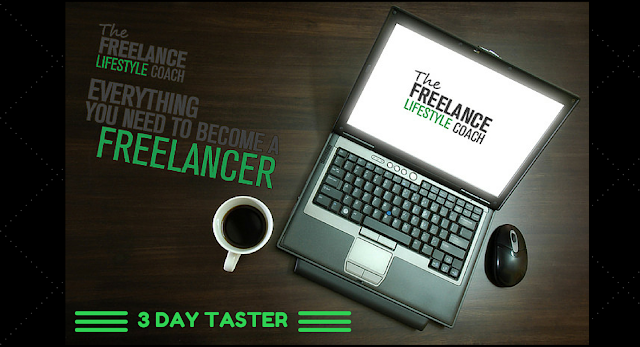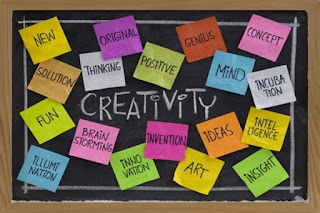Facebook combined a playful concept with great design in this recent initiative to send its 2015 marketing insights to agencies—via a beautiful deck of 52 illustrated playing cards.
Tuesday 23 February 2016
Thursday 18 February 2016
4 Creative Ways To Increase Brand Success
Do you have any idea how many unique methods there are to increase brand success and get your business more visible, clicks, and sales? Most small business owners and even many marketers would be amazed to realize all the options they haven’t considered yet.
Honestly, there are so many that this post can’t cover them all–and if it did, it would be overwhelming. So let’s focus on just four ideas now. Choose and implement your favorites, and then expand from there.
Use Apps to Increase Productivity
The first step is to use tools that increase productivity and reduce the time it takes to do what you are already doing to free up time for new strategies. Start by choosing the best apps for your needs. (Ask a marketing consultant to help you narrow down your choices.)The post "15 Essential Apps to Streamline Your SMB" covers many of the types of applications available. Check them out, and pay particular attention to how your business handles these key tasks:
- Lead generation and follow-up
- Workflow management and time tracking
- Invoicing and bookkeeping
- Social media management
Use Business Dashboards to Monitor Important Metrics
The number one complaint businesses have about social media is that they are not sure it is benefiting them. The easiest way to stay on top of not only your social media, but also your top content and analytics is to use the all-in-one business dashboard Cyfe.This video explains what Cyfe does and shows how fast and simple it is to create dashboards using pre-configured widgets for just about any important aspect of your business you want to be able to view at a glance:
Instead of having to log into analytics, each of your social networks, your marketing system, and so on separately, you can open Cyfe and see whatever metrics you feel are most important to your business all in one place.
If you haven’t worked with business metrics before, read "Dominate Your Competition Using Metrics." The post will give you an overview of what your goal is, but it doesn’t tell you what metrics you want to measure.
Metrics and Key Performance Indicators (KPIs) vary depending upon what you want to measure. “Metrics Roundup” provides links to resources covering the basics through the most comprehensive strategies for these various types of metrics: marketing, content, social media, video, startups, and IT.
Create Beautiful Documents to Share Online and Off
While the ease of publishing a blog post is great, sometimes a more polished appearance is desirable. PDFs have become the standard for creating sales materials, white papers, case studies and ebooks because of these important reasons:- The appearance of the document including the fonts used and image sizes can be controlled for optimum results, unlike web pages which look different depending upon the browser and monitor size used.
- PDF files are universally accessible on every operating system.
- Modern browsers allow PDFs to be viewed right in the browser–no PDF application required.
- PDF files can be password protected and encrypted.
- Newer mobile operating systems can open PDFs.
- Fast and easy to create (although something more of a challenge to edit).
Use a program like Icecream PDF Split & Merge to assemble PDFs into a portfolio or add them to your annual reports. PDFs are definitely a great way to make your business stand out–and don’t forget you can have them printed and use them offline in meetings and presentations, too.
Get Creative With Visual Media
Images, videos, SlideShares, and infographics garner the most attention and have the best chance of going viral. The more time people spend on mobile devices instead of desktops, the more important these become.Many brands have managed to tie their businesses into sports, popular movies, or famous celebrities to increase their visibility. The following is an example of how the team at Men’s Hairstyles Club used an infographic of the Top 5 Male Athlete Hairstyles to get fans of famous sports figures to want their products:

How Will You Increase Brand Success?
These are only a few of the hundreds, or possibly thousands, of ways to promote your business and increase brand success, but they are among the most important. To recap:- Get your business house in order.
- Use business dashboards to monitor important metrics.
- Give your documents a professional look by using PDFs.
- Go visual with infographics, videos, images, and SlideShares.
Tuesday 2 February 2016
full time to freelance, A step by step guide on how to go freelance
This article was contributed by Lucy Barret.
None of us can deny that being free to do and be whatever we want, holds a lot of appeal. Why else would at least 35% people on any continent choose self-employment?
The Pros & Cons of Freelancing
Theoretically, it sounds ideal. But the real world is a harsh mistress. Being a self-employed designer can quickly turn into a waking dream of horrors. How much work-weight can you take without forgetting to eat or sleep? How are you going to get clients since you’re awkward and anti-social? How are you managing your income? Do you even have an income?
That’s the part of the iceberg that lies beneath the water.
You’re now making a leap from being on someone’s payroll to being responsible for your own backside. There’s stuff to do. Drawing up contracts, setting up space, marketing and advertising, looking for work, and that’s way before you get your first project.
So to keep your freelancing dream-ship from sinking to its doom, here’s a checklist of things you should take into consideration before making the plunge.
Before you go Full Time Freelance
1. Do Your Research
Take it seriously. Just because you’re a freelancer doesn’t mean you get to lounge around on the sofa wearing a shirt that hasn’t been washed in, oh, weeks. You are an entrepreneur. Act like it.Get a realistic idea of what you’re getting into and what you’ll need. How much would it cost? Consider domain, server space, software and stock subscriptions, rent and upkeep on living arrangement (which will probably double as your office space), legal requirements, and more. See these expenses for m
Make an informed decision.
2. Manage your Money
Yes, even before you start making any of it. You have to look up where a significant chunk of your money will go.Tools like Mint and the friendly little Mvelopes will make budgeting easier, while Less Accounting and Zoho Books will let you manage your taxes, invoices and cash flow like a pro.
This is so you don’t binge on expenditure and then spend the foreseeable future living on dry bread sandwiches, in a hovel without water or electricity.
3. Manage your Time
If a burning hatred of work-hours is your motivation for going the solitary route of self-employment, you’re probably better off at a job. It takes some serious time and effort to get your freelancing off the ground.That’s not to say you should take on so much work you don’t have 5 minutes to take a dump. It’s unhealthy for your body, relationships, and quality of work.
Create a practical time schedule and stick to it. Use tools like Tick to balance productivity with peace of mind. Use email tools & hacks. This is to prevent both burnout and wanton laziness.
4. Make a Smooth Transition
You may want to quit your day job now and begin freelancing today. But rushing headfirst into it is asking for trouble.Instead, take your time checking out all of the above (and below) so that you’re not needing work or money when you finally make the transition. Ease into it, moonlight then take the plunge only when you’re ready.
Setting Up Your Shop…
1. Le ‘Office’
More than just a business card, your website is the digital equivalent of a brick-and-mortar office. You may work from Nowhere, End of the Earth, but your website can still work wonders to ‘bring’ you clients.A URL of your own, a collection of your previous work, a showcase for your best projects, a bit about yourself can go a long way to solidify your credentials as a designer.
Make sure you have a contact form so clients can easily contact you.
2. Le ‘Voix’
A lot of us hated writing mid-term papers, but writing for your own blog can be fun and lucrative.Your blog posts can help you gain recognition and reputation as an ‘expert’ in your field. If you know what you’re writing about and if you’re writing it well, people will read it and heed it. Then they’ll look up to see who wrote it.
This builds up creditability and authenticity. It tells people you know what you’re doing. You can land some really good clients that way.
3. Le Marque
You know what, in this age and time? You are not your job. Your job is You, if you’re good at it.Branding isn’t a fancy word marketers like to throw around. You can define your image and build credibility with little things that matter. You can speak without saying anything. That’s the subtle power of branding.
Pick a thought, any thought. You want to be seen as clean / efficient / organized? Or perhaps as raucously, rapturously bold and beautiful as possible? Anything you wish to be seen as, incorporate that in your logo, your website’s name, the way you write your personal info, heck, even your picture.
It gives potential clients a sense of who you are, so the one rule you should follow is be personable and polite. The rest is open to splurges of your personality.
Strutting your Stuff…
1. On Social Media
Just because it’s good doesn’t mean it can’t get better. Think above Facebook and Twitter and get in on the action with Dribble and Pinterest.Show what you can do on Behance and Cargo (especially awesome for beginners). You can also become a part of community to share your work with other designers and get their opinion. The more places you are, the more places you can be seen.
2. In the Real World
Yes, you can advertise locally for services you provide on the web. Why so incredulous?Advertising in the real world will actually get you more attention and people are more likely to remember you if they meet you face-to-face.
So go to conferences and speak. Meet people and don’t balk while answering what you do for a living. Be confident.
Just don’t overdo the confidence. That smells like desperation.
3. Individual Social Responsibility
This needs to be a more prevalent thing.You can offer your services to charities/ animal shelters/ churches etc. and get the reward of contentment and experience. You can make some tutorials and even offer some freebies to entice clients.
But keep it in moderation. You don’t want anyone taking you for granted and don’t do spec work.
4. Specialization
You don’t remember Leonardo Da Vinci because he was a great visionary and studied anatomy. You remember him for his art. Even if you know and do everything, your prospects need to see you as a ‘specialist’.Find your strengths and interests and become notorious (for them).
Once people know you as the ‘”Best Interface Designer in Long Island” or “that crazy-brilliant navigation artist in France”, you know you’re on the right track.
Happy Clients
1. “Service with a Smile”
Be firm but flexible and friendly; personable but professional. Happy clients can make for good case studies or testimonials.Remember that a long term relationship is often more profitable than a one-time deal.
2. “Please wait a moment.”
Respond in earnest and in a timely manner.This fosters faith in your professionalism. You don’t have to make hasty replies the moment you receive a lead, but you shouldn’t keep them waiting for long either.
You’re in a cut-throat competitive environment. Don’t lose a good project because you were too lazy/arrogant to act. Follow up also, a service such as Boomerang or FollowUpThen will help here.
3. “Sorry, we don’t have it.”
You can’t afford to be picky as a starter, but sometimes you have to accept that it’s not meant to be.When you think you and the potential client aren’t likely to get along: mentally list all the reasons you have for reaching that conclusion. If the client seems like an irascible, overbearing, micromanaging sort of person, include that in your list too.
Tell the client (politely) that you’re not what he/she is looking for. If you can, refer them to someone else.
Legal Mumbo Jumbo
- Contract
- Copyright Information
- Terms and Conditions
Keep in mind; you’ll probably lose clients if you bring out a contract. You can minimize that by letting them know that the terms are negotiable and you’ll be happy to discuss them.
Bottom Line
That being said, it’s also the best thing ever. Once you start getting more than a handful of clients without looking for them, you’ll know what I mean.
Until then, work for it a little. Remember, even the Bible says: No fruit ever tasted as sweet as the one you earned from the wages of being self-employed.
Photography Tips for designers
Throughout your career as a designer you will be required to use a camera at some stage so it is vital you know how to use one, and at the very least, know the basics principles & elements of photography. So I present to you photography tips for designers.
How to boost your creativity
I have previously written an article on how to be creative, however, it didn’t tell you how to boost your creativity.
Below are some great ways of stimulating your brain to get great ideas – fast.
16 Designer Job Description
As a student, I often hear other students asking their tutors “What is the difference between a creative director and an art director?”. To be honest I didn’t know at first however luckily enough I was given a link by one of my teachers answering just that question. So I present to you 16 designer job descriptions.
Solo designer
A freelance or self-employed design professional who works independently of a company and has no employees.
Owner, partner, principal
An owner, partner, principal holds an equity position and has major business responsibility for a firm having employees.
Creative/design director
A creative director or design director is the creative head of a design firm, advertising agency or an in-house corporate design department. In all of these areas, key responsibilities can include the development of graphic design, advertising, communications and industrial design publications.
Art director
The art director establishes the conceptual and stylistic direction for design staff and orchestrates their work, as well as the work of production artists, photographers, illustrators, prepress technicians, printers and anyone else who is involved in the development of a project. The art director generally selects vendors and, if there isn’t a creative director on staff, has final creative authority.
Senior designer
The senior designer is responsible for conceptualization and design of solutions from concept to completion. In some firms, a senior designer directs the work of one or more junior designers who generate comps and create layouts and final art. In some cases, senior designers do not manage staff but are designated “senior” because of their authority in design decision-making.
Designer
A designer is responsible for conceptualization and design of graphic applications such as collateral material, environmental graphics, books and magazines, corporate identity, film titling and multimedia interfaces, from concept to completion.
Entry-level designer
An entry-level designer is one-to-two years out of school and requires mentoring in all aspects of design conception and implementation.
Print production artist
A print production artist has a working understanding of layout, type and color, and is able to take instructions from a designer and create a complete layout, working proficiently in InDesign, QuarkXPress, Photoshop and Illustrator. Responsibilities also include producing final files that image properly to film.
Web designer
A web designer determines and develops the look and feel for sites, and is responsible for site navigation design and visual execution.
Copywriter
A copywriter is able to write, edit and proof promotional or publicity copy for print or electronic publications. At higher levels, copywriters are often responsible for strategic and conceptual development of messages and stories.
Print production manager
The print production manager is responsible for managing the process (bids, scheduling, production and delivery) of producing publications, from concept through production, including photography, separations, 4-color press work and digital production. Print production managers are strong project managers, managing multiple jobs simultaneously. In some cases, proficiency in InDesign, QuarkXPress, Illustrator and Photoshop is desirable in this role.
Marketing manager, new business manager, director
A marketing or new business professional is responsible for seeking business opportunities, developing proposals and marketing the firm’s practices.
Web developer (front end/interface systems)
A front-end developer uses HTML/JavaScript/ASP/ColdFusion and other tools to develop static and dynamic web pages.
Web programmer/developer (back end systems)
A back end programmer works with web server systems and web databases, develops web queries to databases and programs web applications.
Web producer, senior producer, executive producer
A web producer organizes web development teams and ensures adherence to budget, schedule and design of website development.
Content developer
A content developer is also known as a web writer or editor. He or she is responsible for the production and repurposing of text/graphic/audio content on sites.
So now you know the difference between a creative director and an art director and the various
other designer jobs out there. If there is any missing please just leave a comment. ;-)
HOW TO BE CREATIVE
Do you ever get asked ‘Where did you get that idea from?’ in any of your projects or pieces of work and you couldn’t answer the question? Well, I have actually come across that a few times and it made me think to myself, where do I get my creativity? How do I get my creative juices flowing? How do I boost my creativity
Monday 1 February 2016
what is graphic design
I came across this interesting video on YouTube, where AGDA (Australian Graphic Designer’s Association) asks the general public on the street (in Australia) various questions on graphic design.
Top Mistakes Graphic Designers Make
Below is a list of very common mistakes that so called ‘graphic designers’ make.
How many of these do you do regularly?
WordPress Plugins You Must Have
Below I have composed a list of the 20 must have wordpress plugins I am currently using with my WordPress self hosted blog.
What is RSS?
If you’re new to RSS and syndication on the web, I hope this page offers a straightforward explanation of its purpose. By learning what RSS is, you will literally save hours of your time in the years to come.
What is RSS?
“RSS” stands for Really Simple Syndication. RSS is a standard for publishing regular updates to web-based content. Using this standard, Web publishers (such as the site you’re on now) provide updates, such as the latest news headlines or weblog postings. Meanwhile, consumers use RSS reader applications (or one of a growing number of online services) to collect and monitor their favorite feeds in one place (RSS content from a publisher, viewed in one of these readers, is often called a “feed”).Benefit to you: RSS makes reviewing a large number of sites in a very short time possible.
Benefit to us: RSS permits instant distribution of new content updates to you.
How do I read RSS Feeds?
RSS/News Aggregators:If you want to collect and browse feeds you have many choices, but there are two primary categories of feed reading applications: installable desktop programs and online services. I recommended using an online service as this allows you to track and manage your feeds anywhere you use a web browser (and in some cases, on mobile devices).
Blogs:
Another way many people use RSS feeds is by incorporating content into blogs. Blogs (such as this website) are web pages comprised of usually short, frequently updated items and web links. Blogging as a publishing tool is used for many purposes: traditional journalism, personal journals, group discussions around a topic, and many combinations in-between.
Video: What is RSS?
Below you can watch a video describing RSS in simple terms. If you would prefer a more in depth written description please visit What is RSS?Advice For Design Students
Having an online presence in the design world has left me quite a position to fill, in fact, I get quite a few emails from design students (or alike) requesting advice or an interview.
Most of the time I do try to reply however, many times I seem to be repeating myself so I thought writing a post with my answers (& others) would be a good idea… the question that comes up guaranteed, every time is:
What is the biggest piece of advice you would give to a designer just starting out?
I usually respond with the same paragraph each time (it is saved in my Gmail drafts folder) and my advice goes something like this:
The biggest piece of advice that I would give an upcoming designer comes in a ‘package’ based from the little things that I have learned over my short career as a designer. These would be perfect for someone just starting out: Don’t undervalue your work. Seek criticism, not praise. Always keep learning & don’t be a static learner: do this by reading books, magazines, blogs and by practising. Collect & share things. Teach others. Never give up. Keep practicing. Again, keep practicing.
Below are the responses from the designers who I have interviewed so far.
Lady Omega – Never give up. Generate as much happiness as possible. The main thing is to start, not speculate, but just start doing.
Elliot Jay Stocks – Work for ‘the man’ before going freelance straight out of university or college.
Colin Wright – Stick to your guns. If you like your style, and other people like your style, who cares if other other people don’t like your style?
Be knowledgeable. About anything and everything. This will allow you to relate to more and make you a more effective communicator.
Don’t be above anything. Sometimes the small jobs can lead to big ones (though don’t take a job just because a larger one was dangled in front of you).
Kai Chan Vong – Don’t give up. But don’t expect it to be easy. If you want to be half decent, you should expect to work really hard and try to learn from others as much as possible. The Internet has made it so that if you want to be a great designer – you need to learn from others on a day to day basis. Whether that’s from friends, co-workers or other designers: you need to constantly have your mind open. Good luck! You can do it!
Mike Smith – Never quit. No matter what gets in your way, or what hurdle you have to jump over, just keep going. I don’t care if you read zero websites and network with no one, just keep going. Push yourself and never give up. People will run their mouth and sometimes you might hit a dry spell in clients, but keep going. Use that time to design your own work or build something useful for other people. Progress every day. If you don’t take a step, you never move forward. Why sit still if you’re not happy in your current situation?
Prescott Perez-Fox – Make friends with everyone. Make sure you have people, upon people, upon people who you can call to collaborate with to make a job referral, or even just to chat and blow off steam. Don’t be that mad-scientist type who stays locked up all day: get out and make friends.
Drew Dunlap – Work your butt off! If you don’t try your best and give it your all, the customer will know: not only because of the way that they’re treated but also just by looking at their artwork.
Treat everyone you work with with respect and be kind. Customers talk about good designers but they talk way more about bad designers. Be respectful on blogs, contests and anything web related. Being distasteful not only reflects bad on you personally but also for your business. Don’t use slang or internet terms when talking with customers, be professional.
Think of grade-school: treat them as you’d like to be treated!
Chris Spooner – Strive to keep yourself updated with changes in the industry, this particularly relates to web design which seems to move at a pretty fast pace!
Jennifer Farley – Use a contract and get at least 25% upfront when doing design work.
Doug Cloud – Don’t give up. No matter how much you want to. No one is going to succeed if they give up. And besides, why would you want to?
Emily Lewis – Read, read, read what is out there, even if you don’t understand it all. Eventually, it will start to “click.”
And then, practice, practice, practice. Make your own site/portfolio/blog and implement the “cool” things you read about, even if it take hours to get it to work. You’ll never forget something you had to pull your hair out to get working.
Andi Creffield – If you’re in it for the money, you’re in the wrong business.
Kate McInnes – Don’t give up, don’t copy other peoples stuff and don’t forget to have fun!
Fabio Sasso – I think the most important thing is to love the whole design process, from the beginning to the end. That really helps when you have to start something from the scratch or review some steps. Also practice and share your experience with the others, it’s a nice way to recycle your thoughts and get more point of views.
Albert Lo – I’ve learned a lot by making mistakes along the way and to this day I’m still learning. My biggest piece of advice I would give someone starting out is to persevere trying to find your first design job, don’t get disheartened and be confident in what you design. Take your mind off things by coming up with personal projects or take a part time job, your first design job to get your foot through the door will come out of the blue when you least expect it.
Brian Yerkes – Never stop adding to your skill set, and always make sure that when you look back over your previous year, you have come a long way baby
Subscribe to:
Posts (Atom)















